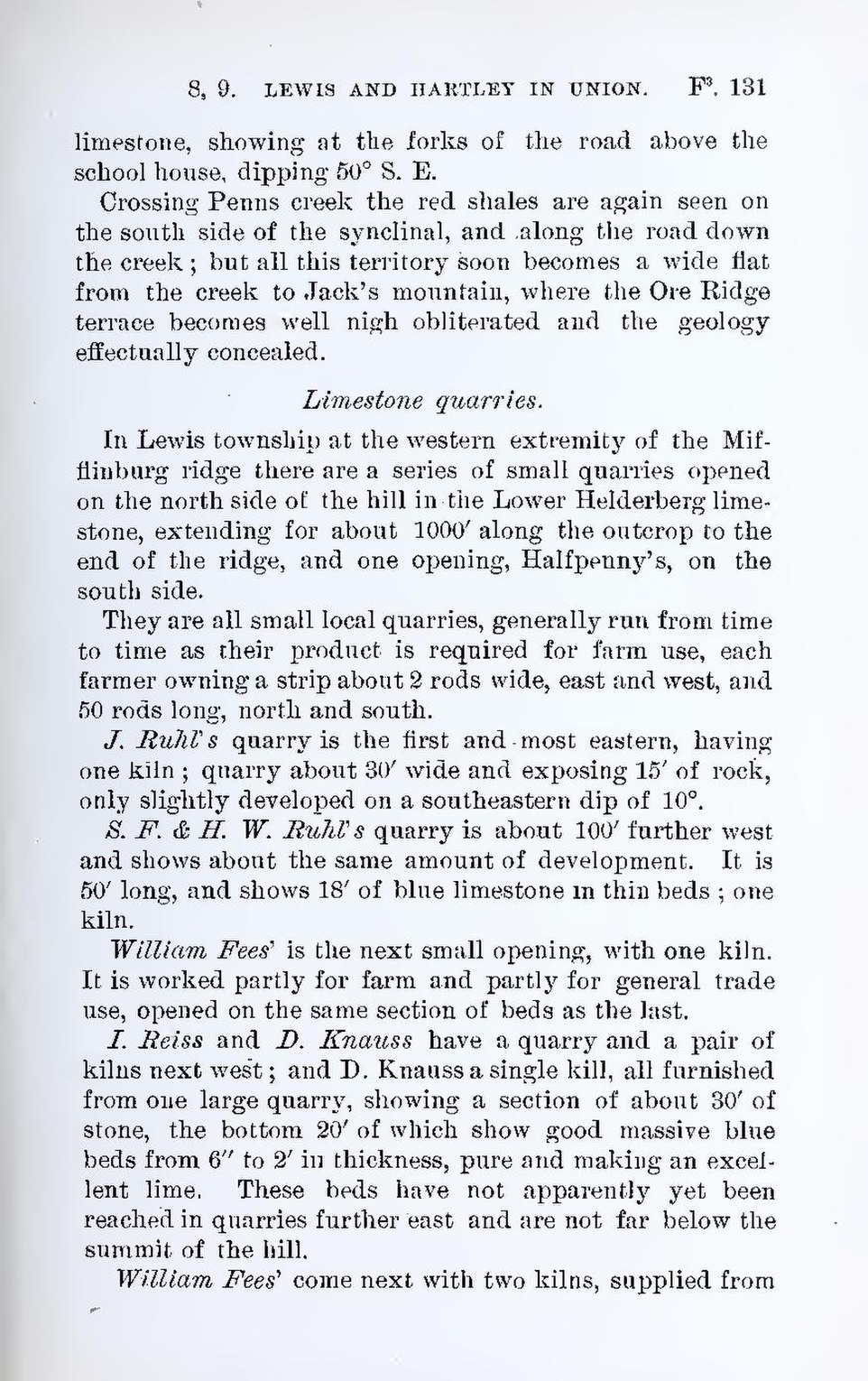limestone, showing at the forks of the road above the school house, dipping 50° S. E.
Crossing Penns creek the red shales are again seen on the south side of the synclinal, and along the road down the creek; but all this territory soon becomes a wide flat from the creek to Jack’s mountain, where the Ore Ridge terrace becomes well nigh obliterated and the geology effectually concealed.
Limestone quarries.
In Lewis township at the western extremity of the Mifflinburg ridge there are a series of small quarries opened on the north side of the hill in the Lower Helderberg limestone, extending for about 1000′ along the outcrop to the end of the ridge, and one opening, Halfpenny’s, on the south side.
They are all small local quarries, generally run from time to time as their product is required for farm use, each farmer owning a strip about 2 rods wide, east and west, and 50 rods long, north and south.
J. Ruhl’s quarry is the first and most eastern, having one kiln; quarry about 30′ wide and exposing 15′ of rock, only slightly developed on a southeastern dip of 10°.
S. F. & H. W. Ruhl’s quarry is about 100′ further west and shows about the same amount of development. It is 50′ long, and shows 18′ of blue limestone in thin beds; one kiln.
William Fees’ is the next small opening, with one kiln. It is worked partly for farm and partly for general trade use, opened on the same section of beds as the last.
I. Reiss and D. Knauss have a quarry and a pair of kilns next west; and D. Knauss a single kill, all furnished from one large quarry, showing a section of about 30′ of stone, the bottom 20′ of which show good massive blue beds from 6″ to 2′ in thickness, pure and making an excellent lime. These beds have not apparently yet been reached in quarries further east and are not far below the summit of the hill.
William Fees’ come next with two kilns, supplied from
